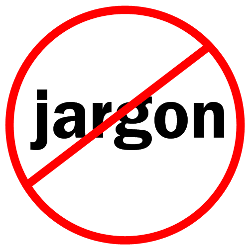1. Shove a datasheet into a prospect’s face right after you introduce yourself.
When a qualified prospect on a fact-finding mission enters your tradeshow booth, you introduce yourself and inquire about their business and their familiarity with you (read: you qualify them). What you do not do is dive right into a spec-sheet monologue. It’s the same with content. Just as your marketing material should be calibrated (and designated) according to the prospect’s stage-of-purchase, it must be sequenced accordingly. In the same way, the best “family” of content begins at the primary level and gradually moves up to more advanced material. Caveat: don’t always assume that a relatively well informed prospect won’t find use for introductory materials. Savvy shoppers will contrast and compare competitors every step of the way and cross-check competing claims. Hint: vendors showing the most proof-points with the most relevance to the reader usually win.
2. Emphasize your features and benefits rather than their problems and issues.
A variant of #1 above, it’s no secret that content with user themes earn the most favor with users. But you must go further. Don’t talk about your offering per se so much as the solution it represents to problems vexing the customer. There are nuances to being perceived by a customer as “one of us”, rather than being seen as just another vendor. You want them to receive you as a partner rather than a supplier. Your content will either validate one perception, or the other.
3. Assume they believe you have no competition
If you think this is a no-brainer, then why is so much vapid marketing content floating around? The first step in breaking away from the pack is to acknowledge that it’s there. Customers understand you only in terms that they’ve already come to understand–by virtue of what they’ve learned and continue to find out about alternative offerings. Besides, if you’re the only solution, how can a viable market exist? The worst impression you can create is that you don’t know your competitors as well as your prospects do.
4. Presume everything you slap a logo on makes it inherently “must-see TV”
Happens all the time to product managers who look at a user through the lens of their product when they should be looking at their product through the eyes of the user. It’s no coincidence that so many marketers of this persuasion tend to be hyper-competitive, obsessing on how the competition is marketing, what it’s saying, doing and achieving. Make your customers’ issues your issues and your content will naturally reflect a customer-centered POV.
5. Believe that everything is as good, or as bad, as Sales says it is.
Snarky, maybe, but this old saying has been around too long to dismiss it out of hand. Your sales force is inherently focused on the deals and crises of the moment. This means perceptions can become quickly and easily distorted in the heat of the transaction process. It’s only human to project what we want to see and hear from our prospects and customers, rather than take a breath, stand back and understand a situation for what it really is. Look at large pattern of data points, not just the ones you’re infatuated with, or most alarmed by, at any moment. Which, after all, is fundamental to the marketing mission and the marketing content it depends on.
So what are your content-marketing practices? How do you ensure a customer-and-market focus?











